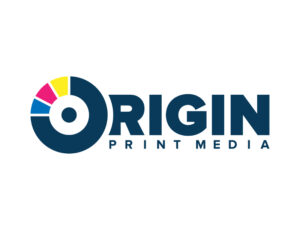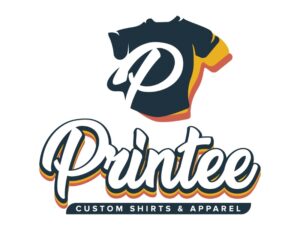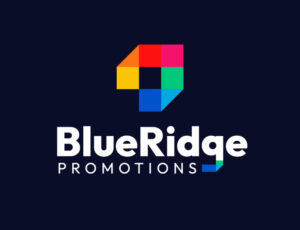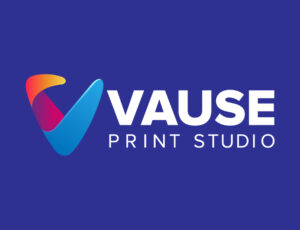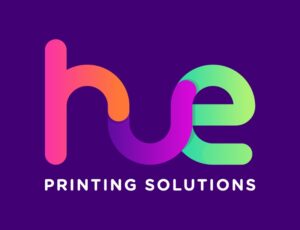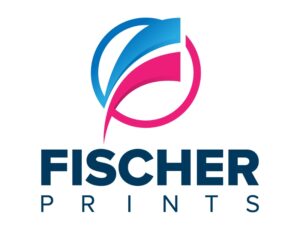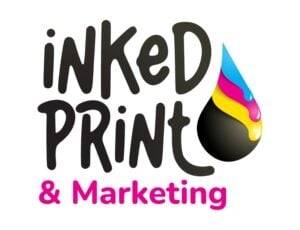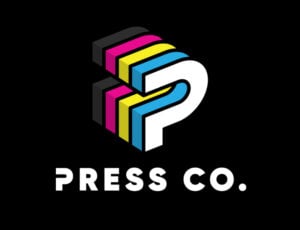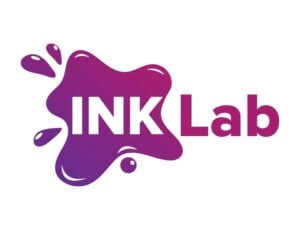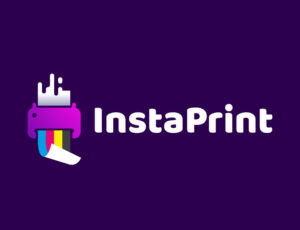
Do you want to become the premier printing service in your community? One way to leave a mark is with a logo! But if you don’t know where to start, check out these ten amazing logos Penji designers created! In addition, book a demo to see what Penji can do for you!
How to Get a Good Printing Logo
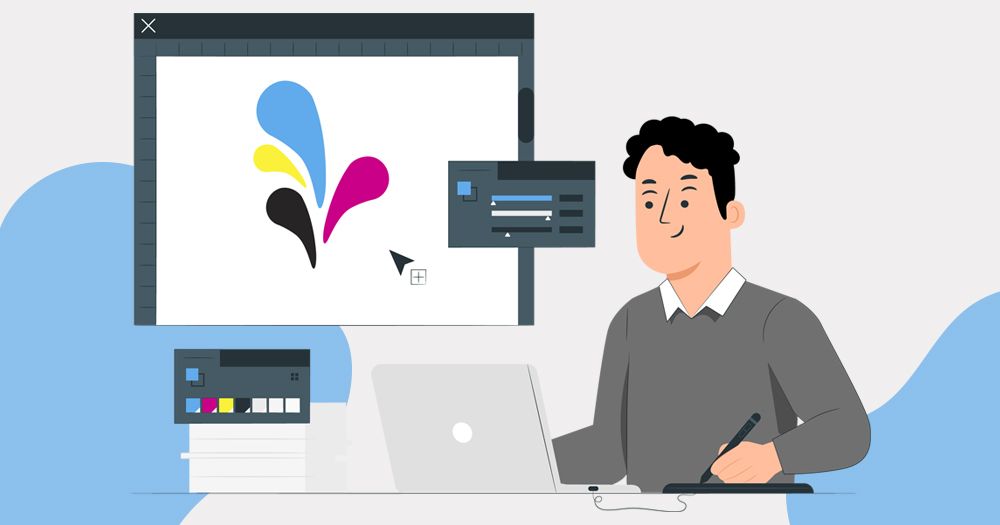
If you have an envisioned printing logo, but don’t know if you should do it yourself or hire a graphic designer, here’s what you need to know to get a good printing logo.
- Do-it-Yourself: Logo makers have become helpful to small business owners and start-up founders. After all, logo makers are free, and you don’t need prior design experience. DIY logo makers are the best option for you IF you want a simple wordmark or monogram logo.
- Freelance Logo Designer – Maybe the printing logo you envisioned may be difficult to do on logo makers. A designer can create the logo for your printing business. Most logo designers are experienced in making the best logos. Plus, you can even check their portfolios to see if they’re a good fit for you. Hiring a freelance logo designer is the best option for your business for one-time projects.
- Unlimited Graphic Design Service – An alternative to a freelance logo designer is subscribing to an unlimited graphic design service. More small businesses are making the move to subscribe to these services because of their affordable pricing plans and unlimited graphic design work. You can guarantee that THE BEST DESIGNERS are part of unlimited graphic design services like Penji! And if you need a compelling logo + so much more, then the unlimited graphic design service is the BEST option for you.
10 Printing Logo Designs
Most printing businesses use the CMYK color scheme for their logo design. And most of the logos in this list use the color scheme. But you can differentiate your business from others through logo design. Here’s how our Penji designers did it.
1. Origin Print Media
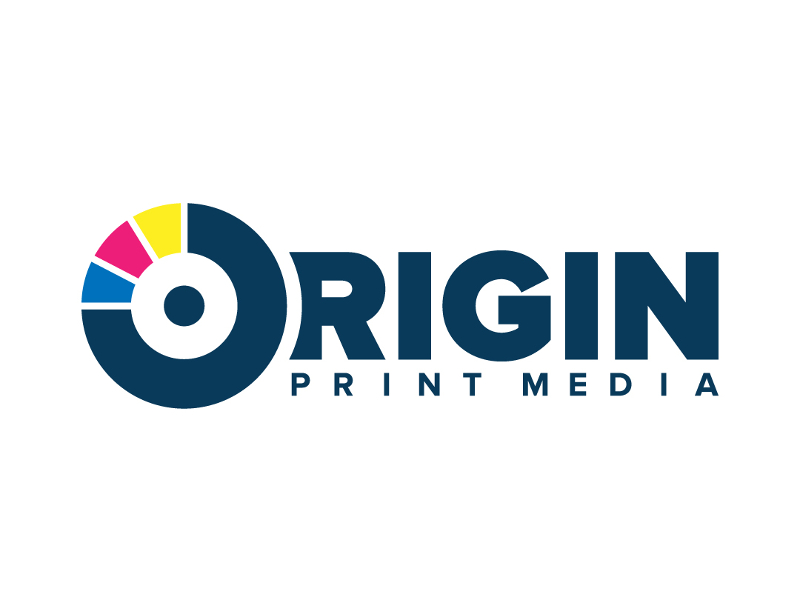
The first on our list is the Origin Print Media logo. Their logo is a wordmark, but the designers took it to a whole new level by making small tweaks and transforming it into a unique wordmark. First, it uses the CMYK model on the O of its logo, giving the logo a splash of color. Then, you’ll see the R reshaped to make way for the O. And finally, the O has a dot in the middle, symbolizing a point where customers can start printing their documents and materials.
2. Printee Custom Shirts and Apparel
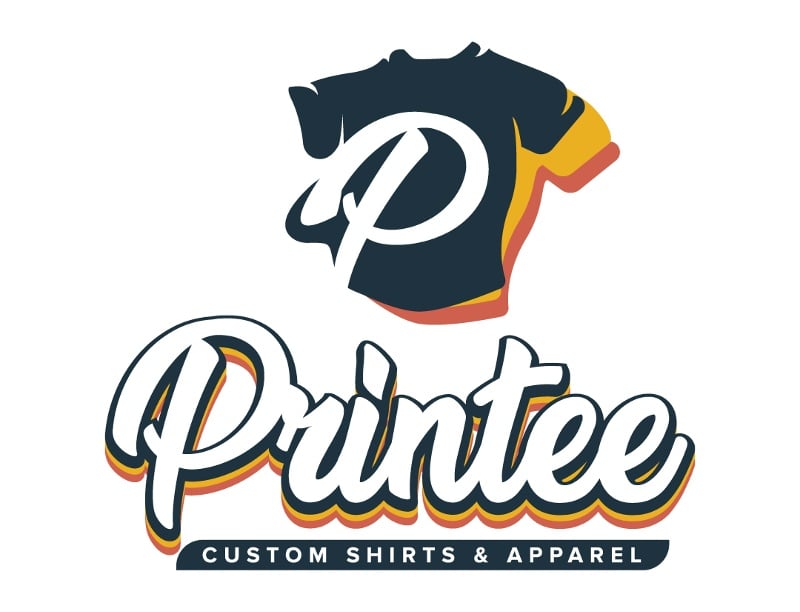
Here’s one printing logo that doesn’t follow the CMYK color scheme. Instead, Printee Custom Shirts and Apparel uses t-shirts as part of their logo, making it relevant to their business name. It’s an excellent logo design if you want customers to know immediately what you’re offering or selling.
3. BlueRidge Promotions
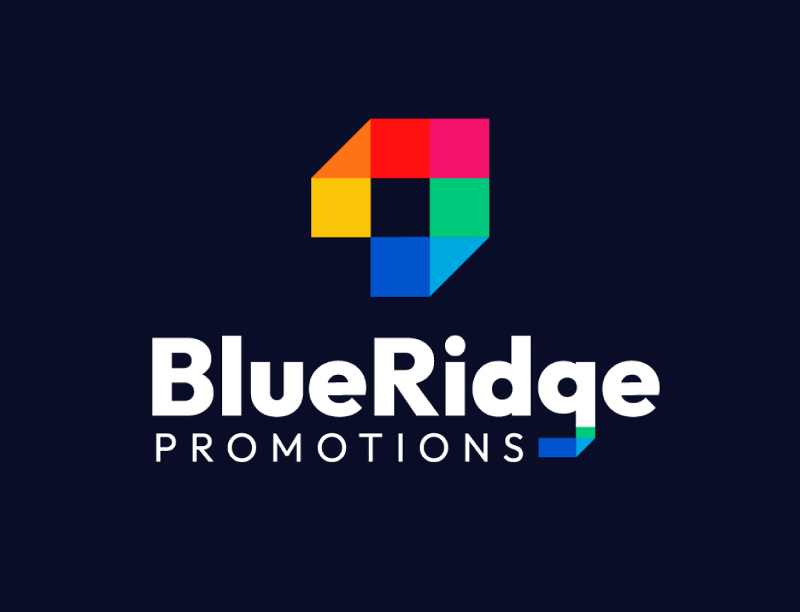
If you don’t want to follow the CMYK model but still want to add splashes of color to your logo, check out this logo for BlueRidge Promotions. They use an abstract geometric shape that’s sure to catch the attention of their customers. Plus, you can also see how they integrated the geometric shape and color scheme into their wordmark logo, giving it a coherent look.
4. Vause Print Studio
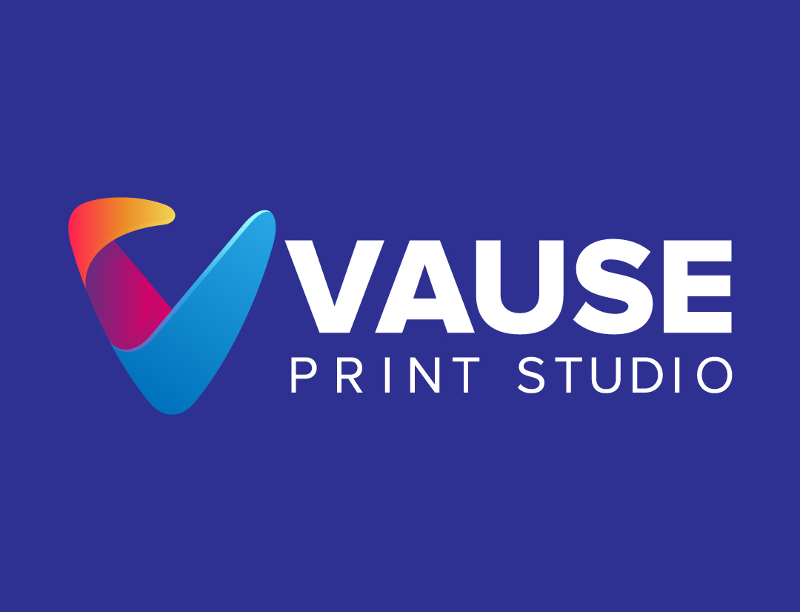
Ink is a common symbol used in printing logos. It could be in the form of a drop or blot. And this one by Vause Print Studio reimagines the ink shape. Plus, the ink shape looks like it’s moving too, which is another way you can convey movement in a static logo. In addition, if you want to add a color palette to your logo, make sure that the colors go well together like the one shown in this logo.
5. Hue Printing Solutions
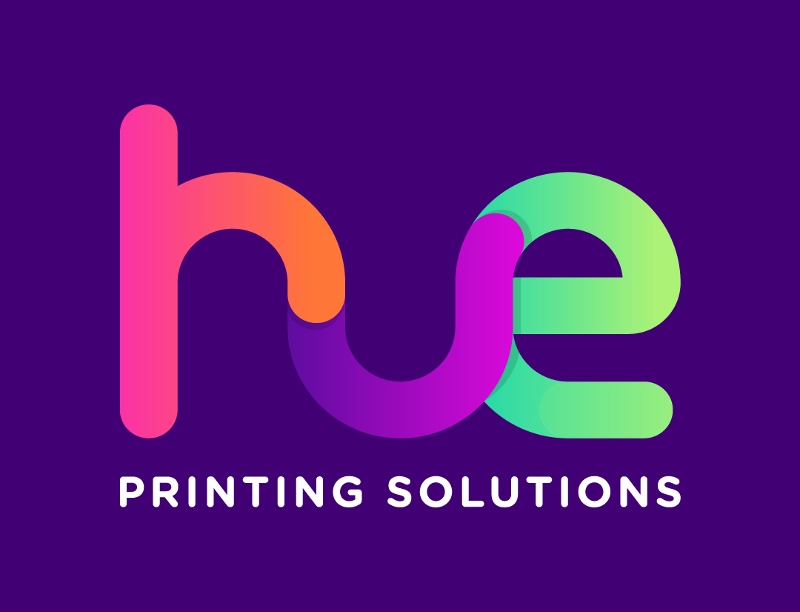
Since ink is liquid, here’s another way to incorporate that quality into your logo. The Hue Printing Solutions logo looks very fluid due to the rounded edges and the way letters move seamlessly to one another. Plus, in printing logos, you want colors to stand out to show that your printing business can bring color into people’s lives. That’s how Hue Printing Solutions want to be recognized.
6. Fischer Prints
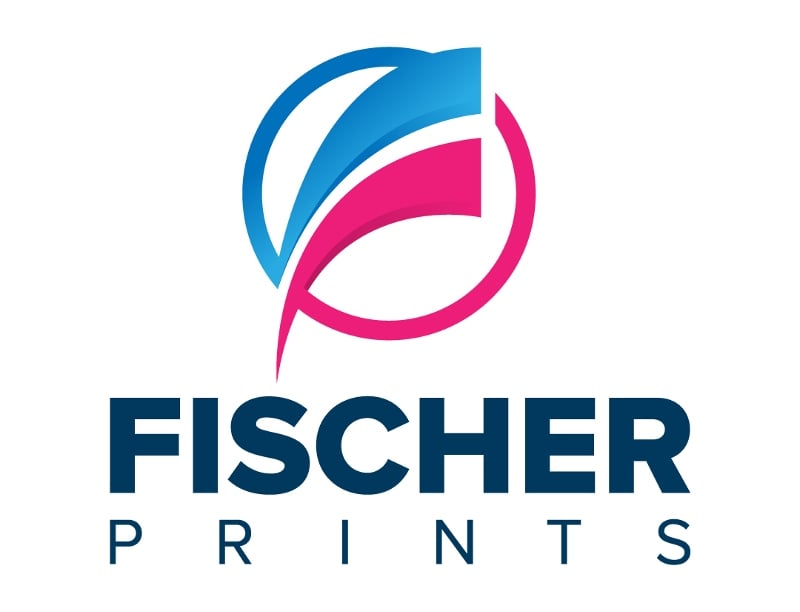
Pink and blue are two colors that go together, but you’ll rarely see them on logos. And Fischer Prints took advantage of that and used that motif in their logo. But that’s not the only distinctive feature of their logo. If you look closely, the two swoosh-like figures look like the letter F, representing Fischer. Meanwhile, the pink line is angled to look like a P, meaning “Prints.”
7. Inked Print and Marketing
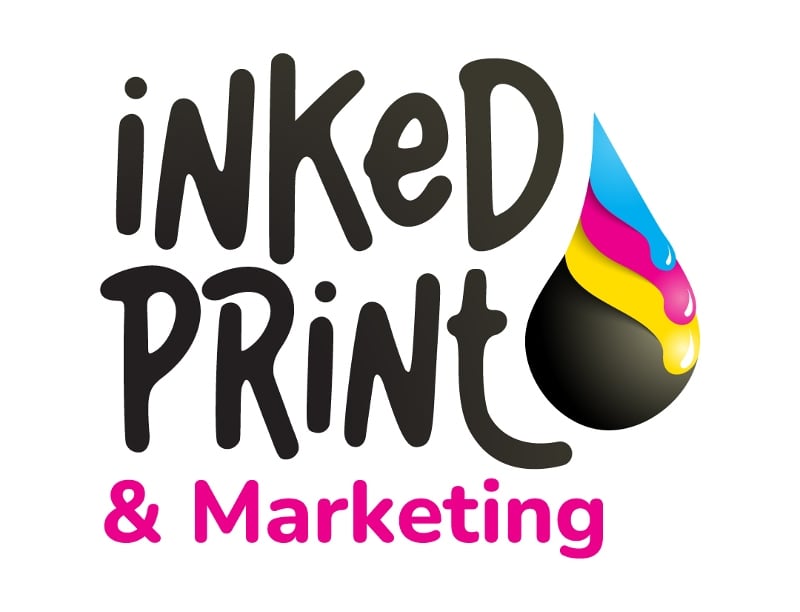
Here’s another printing logo using ink as its primary symbol. And this one by Inked Print and Marketing is a great example of using ink to make your logo relevant and keep it simple. Like the others on this list, it uses a CMYK color model. And to make the pictorial look realistic, there are oozing drip lines on the ink drop. Another thing that stands out in their logo is the font. It appears like it was written in ink, further enhancing their brand.
8. Press Co.
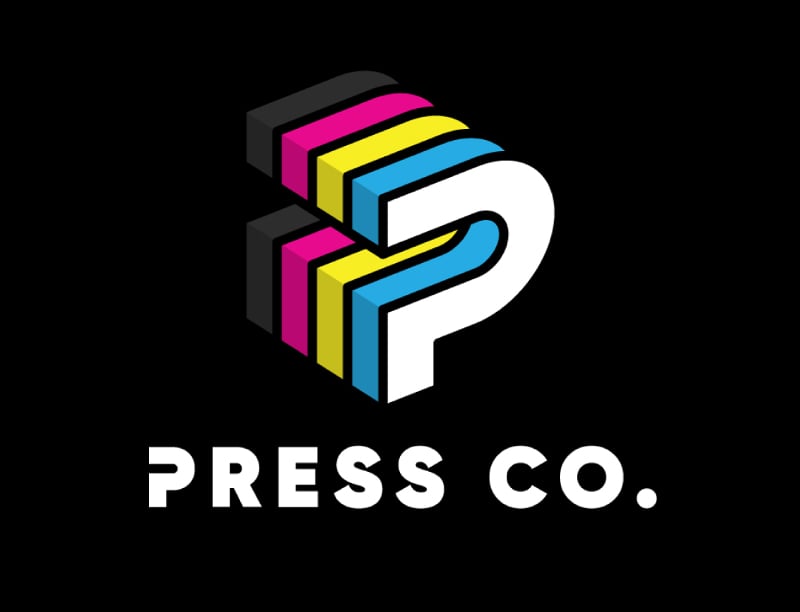
If you want to show “printing” or “copy” in a different manner, check out this logo for Press Co. The monogram P is repeated using the CMYK colors, and it can represent printed copies of what you want printed from them. It can also look like printing toner, which is another symbol to use for your printing logo.
9. Ink Lab
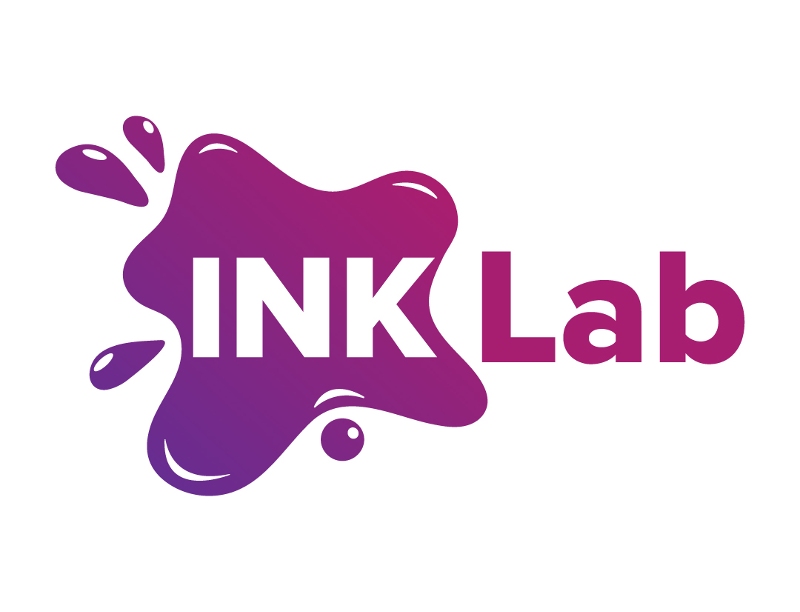
An inkblot is another way to show ink on your printing logo. And if you want your logo noticed immediately, add some color to it like this one for Ink Lab. But if you don’t want to drown in a sea of CMYK logos, make it a gradient or use a color palette for one hue. Plus, to make it more interesting and realistic, add tiny white outlines or bubbles.
10. InstaPrint
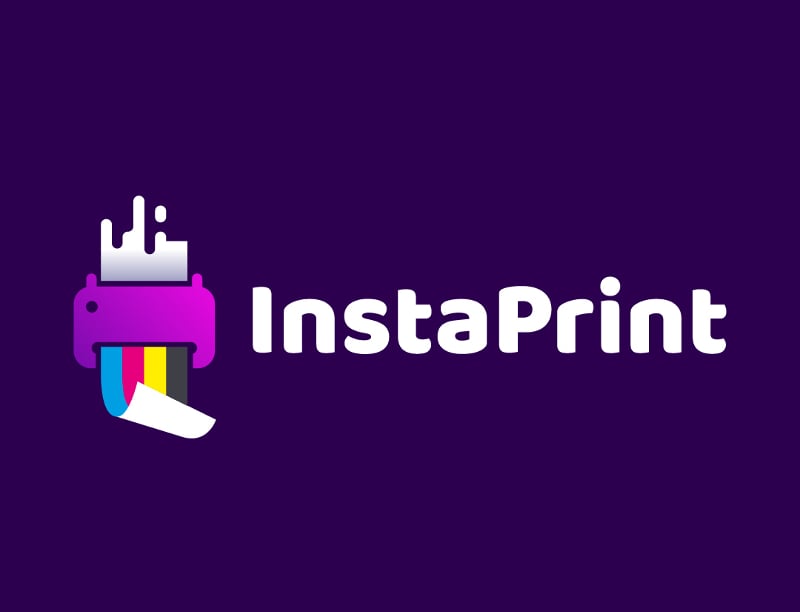
Surprisingly, printing businesses don’t use printers as the pictorial in their logo. But this means when you use printers, you can differentiate yourself from the competition, and that’s the logo for InstaPrint. The printed paper shows the CMYK model, showing customers they can print any document for them.
Types of Logo Styles
Before introducing you to the logo design process, let’s brief you on the common logo styles first. You’ll see some of these logo styles from the examples above!
- Wordmark – This logo type usually spells out your brand name. This doesn’t have an image or illustration. Coca-Cola and Google are two well-known examples.
- Lettermark/Monogram – This is similar to the wordmark, except this uses the brand name’s initials, like Louis Vuitton and BBC are examples of lettermarks.
- Pictorial – This is a visual logo; it could represent the brand name or meaning. Shell and Apple are excellent pictorial examples.
- Abstract – It’s like the pictorial, except the abstract logo has an image that can be unrelated to the logo but makes it unique to your brand! Mastercard and Pepsi have abstract images in their logos.
- Combination – This logo combines the wordmark or lettermark with the pictorial or abstract image. The Unilever and Slack logos use a combination logo.
The Logo Design Process
Before finding a logo designer or designing it yourself, here’s what you need to know about the design process.
1: Researching
The logo design process starts with research. Before you find and approach a designer, you need a better understanding of your brand. For instance, you already need a brand name at this time. After all, some brand names are part of a logo. However, if you don’t want your brand name in the logo, that’s okay, too. You can have a pictorial or abstract logo instead.
Aside from your brand name, you must identify your brand messaging, competition, and audience. This will help your designer create the ideal logo design.
Once you have these ready, it’s time to find logo design inspirations. Preparing logo design inspirations for your designers will help them understand your desired and envisioned designs. A professional logo designer will take inspiration from them but not copy exactly how your competitors would do it. After all, your logo needs to be unique to your brand.
2: Choosing the Right Designer
If you’re not designing your logo, choosing the right designer should be the next step. As we’ve mentioned, you have two other options other than DIY. The first one is a freelancer.
A freelance logo designer is a great option if you need to work with them on your logo project. They’re usually one and done. Then, after that, you can work with other freelance designers for other projects.
However, freelance graphic designers won’t immediately get what you envisioned on the first draft. It could take a couple of days or tries to get your preferred design. Plus, you can’t guarantee the quality and authenticity of the work. Additionally, finding freelancers can be time-consuming since you need to interview them before hiring them.
An alternative is working with graphic design companies or services. They hire vetted designers to be part of their elite team. Plus, they ensure they produce quality work for clients. Additionally, they can provide you with logo variations! Most of these services have a project manager or an art director to oversee the work before submitting it to clients.
However, not all graphic design companies or services are the same. For example, Penji is an unlimited graphic design service. This means you can submit an unlimited number of projects with one flat rate. Plus, you can rely on Penji for unlimited revisions, too. Some services or freelancers don’t offer this perk.
3: Drafting and Initial Designs
At this stage, you should prepare a design brief. Your designer will review it and create a design based on your brief. Make sure that your brief has all these details:
- Logo name
- Preferred logo style
- Colors
- Fonts
- Messaging
- Logo inspirations
- Competitor logos
- Audience
Once you have these details, you can submit them to your chosen designer. Your designer, whether they’re freelance or employed, will start working on your logo design! Your involvement during the initial designs is likely minimal. After all, you want to leave the designer to their devices. You also don’t want to micromanage. Plus, it depends on the designer’s availability when they submit their first draft. Design services have a 24 to 48-day turnaround time.
Once they submit the draft, you review the initial design. This is where you can finally provide feedback and let them know if the submitted draft is good enough or needs more fixing.
But if your logo requires little to no revisions, you can use the logo in all your branding assets!
4: Final Review
The last step is the final review. Your designer will present their final design, and you need to check if it’s all good to publish or use on your assets. Once they get the okay from you, they’ll make the final touches, and your logo will finally be ready to show to the public!
Subscribe to Penji for Your Logo
Is your envisioned printing logo similar to any of the logos above? If so, don’t hesitate to hire a designer and get a compelling logo! Fortunately, you landed in the right place, and with Penji, you can request a logo by submitting a request. It starts by subscribing here. And as a special treat, enter this code: BRANDNEWLOGO15 to get a discount on your subscription! But if you need a logo only, you can go to our Marketplace here!
About the author

Katrina Pascual
Katrina is a content writer specializing in graphic design, marketing, social media, and technology. In her spare time, she writes monthly personal blogs to practice her craft.
Table of Contents
- How to Get a Good Printing Logo
- 10 Printing Logo Designs
- 1. Origin Print Media
- 2. Printee Custom Shirts and Apparel
- 3. BlueRidge Promotions
- 4. Vause Print Studio
- 5. Hue Printing Solutions
- 6. Fischer Prints
- 7. Inked Print and Marketing
- 8. Press Co.
- 9. Ink Lab
- 10. InstaPrint
- Types of Logo Styles
- The Logo Design Process
- 1: Researching
- 2: Choosing the Right Designer
- 3: Drafting and Initial Designs
- 4: Final Review
- Subscribe to Penji for Your Logo

